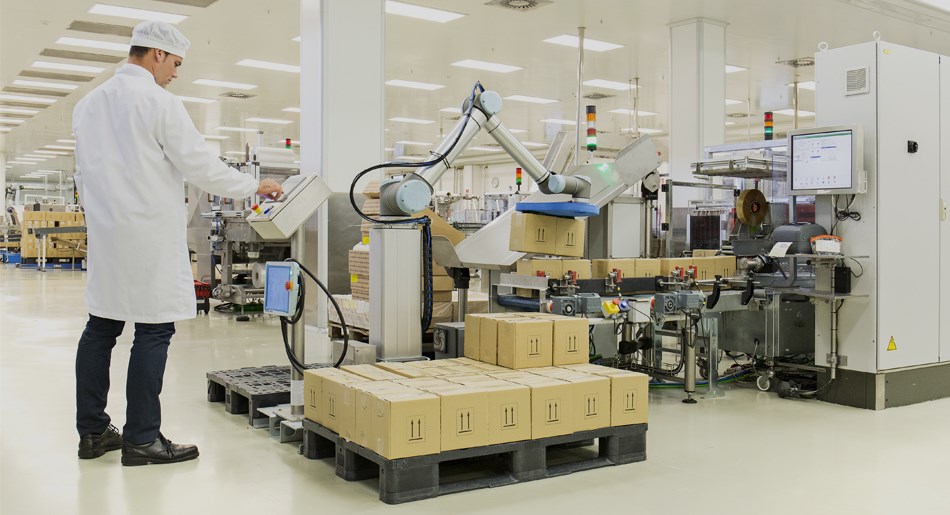Collaborative robotics are generating increasing interest among business leaders, but it's essential to understand the nuances of this technology. This article explores the four main types of human-robot collaboration, highlighting a common misconception associated with the use of the term "collaborative robot". Each approach offers distinct advantages in terms of safety and efficiency.
An overview of interaction modes
Discover the different approaches to human-robot collaboration, from monitored safety zones to hand guidance, speed management and force/power limits.
Monitored security zone
Collaboration in a safe zone allows an operator to enter close to a robot to perform secondary tasks in complete safety. Different sensors, such as emergency stop buttons, scanners and light curtains, guarantee a safe zone. This approach, applicable to both collaborative and industrial robots, offers safe collaboration when the robot is stopped. This method of collaboration is applicable to both collaborative and industrial robots.
Hand-operated guidance
The hand-guiding feature, usually included as standard with collaborative robots, simplifies programming by allowing the operator to manually control the robot. Force sensors and technologies such as Kinetiq Teaching facilitate this process. Once again, this principle of collaboration applies to both industrial and collaborative robots. Unlike industrial robots, collaborative robots do not require the operator to hold a safety switch during guidance, thus simplifying operations.
Speed and monitored zone
This feature adjusts the robot's speed according to the operator's proximity to the workspace. Industrial robots require a reset after operator entry, while collaborative robots maintain a safe speed without a reset. Zone scanners and light screens are used to monitor the zone, offering flexibility adapted to the needs of each application.
Power and strength limits
Collaborative robots are distinguished by their power and strength limits, ensuring safe impact detection. Their mechanical design reduces the risk of injury in the event of collision, offering a superior level of safety. Comparison with options such as "Collision Guard" on industrial robots underlines the specific safety features of collaborative robots.
Beyond the "collaborative robot" term
In conclusion, collaborative robotics offers various forms of collaboration, each adapted to specific contexts. It is essential to recognize that the "collaborative robot" term does not define the robot itself, but rather the application in which it is involved. Safety remains a priority, and a thorough understanding of the specific functionalities of each type of collaboration is essential to minimize risks.
If you have any questions about industrial or collaborative robots, don't hesitate to get in touch with one of our robotics specialists.
Photo and video credits : universal-robots.com

